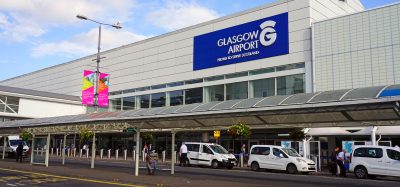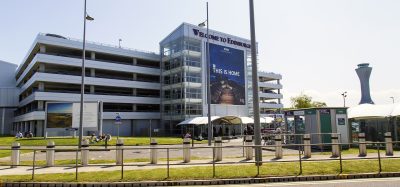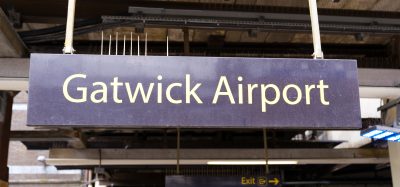Regulations surrounding Ground Handling & Ramp Safety
- Like
- Digg
- Del
- Tumblr
- VKontakte
- Buffer
- Love This
- Odnoklassniki
- Meneame
- Blogger
- Amazon
- Yahoo Mail
- Gmail
- AOL
- Newsvine
- HackerNews
- Evernote
- MySpace
- Mail.ru
- Viadeo
- Line
- Comments
- Yummly
- SMS
- Viber
- Telegram
- Subscribe
- Skype
- Facebook Messenger
- Kakao
- LiveJournal
- Yammer
- Edgar
- Fintel
- Mix
- Instapaper
- Copy Link
Posted: 30 November 2007 | Giovanni David, Aerospace Industrial Sector Manager and Lead Auditor, DNV (Det Norske Veritas) | No comments yet
Ground handling and Ramp operations represent two of the most important aspects of an international airline’s operations. They affect the exercise of its basic market access rights. It is also an important factor for air carriers in terms of operating costs, service levels and the image portrayed to users. Ground handling is sometimes provided by the airports themselves, but at most airports it is provided by airlines or concessionaires.
Ground handling and Ramp operations represent two of the most important aspects of an international airline’s operations. They affect the exercise of its basic market access rights. It is also an important factor for air carriers in terms of operating costs, service levels and the image portrayed to users. Ground handling is sometimes provided by the airports themselves, but at most airports it is provided by airlines or concessionaires.
An airport ramp is a community of relationships and its success relies on how well these relationships are working. Managers have to orchestrate a great deal of activity within a small area, around a magnificently expensive piece of equipment, in a very short space of time.
Ramp operations are a very important part of the whole operation of an aircraft. Ramp handling covers the loading and unloading of baggage, air cargo and air-mail onto the aircraft and transportation between the aircraft and the passenger terminal, air cargo terminals and the air-mail centre. In addition to this, ramp-handling services cover preparations for the delivery onto aircraft of bulk baggage and baggage containers, aircraft loading bridge operations and passenger stairs operations. As we can see, it is a very complex situation where delivery precision and safety are very important issues.
Within this framework the EU directive 97/67 gives all member states a clear directive about ground handling activities. In the very first part of this directive the following is stated: “Whereas, in its resolution of 14 February 1995 on European Civil Aviation 8, the European Parliament repeated its concern that account should be taken of the impact of access to the ground handling market on employment and safety conditions at Community airports.”
In the years following this directive, a certain number of initiatives have been set up in order to reduce the US$4 billion global cost due to ground handling incidents. One of the most recent (and I would say effective) is the IATA initiative named ISAGO (IATA Safety Audit programme for Ground Operations).
2006 has seen the lowest accident rate on a global scale ever (0.65 hull losses per million flights). Over the last 10 years the accident rate has been cut by half and although in some countries the situation is not even approaching the minimal requirements, the global situation is improving more and more.
The biggest aircraft manufacturers and the GHA (Ground Handlers Association) are working together in order to create the standards for an audit programme, due to start in 2008. The final aim is to make the IOSA model applicable to ground handling safety worldwide.
At the same time, the IGHC (IATA Ground Handling Council) is working with three different working groups on developing policies and recommendations on a group of important issues related to ground handling. The ASG (Airside Safety Group) and the RAMPSG (Ramp Services and Equipment Group) meet up annually, in order to further develop and update the IATA Airport Handling Manual. This document is a compilation of what are called “Recommended Practices” (for the ones interested in this booklet it is possible to buy it online on the IATA website) and contains sections that address the following: safety audits, safety training and awareness, as well as additional information which will reinforce and support the industry goal of reducing ground damage, such as the proper and correct use of hand signals.
In addition to the IATA initiative, national agencies such as the FAA are currently working on an incident tracking system, implementing key indicators on incident tracking. The FAA is looking at the following:
- Occurrence (incident count collected from each airport)
- Recurrence (median number of days between incidents for each airport)
- Seriousness (percentage of incidents considered serious)
The image given by these three measurements is a fairly good portrayal of the airport surface safety level in the US.
A similar survey was carried out by the Airport Operation Safety Panel and was summarised in a report published during 2004. In this report a series of factors have been identified as the most common causes of incidents. These factors are divided into two classes: Primary and Secondary factors.
The Primary factors are:
- Human error
- Failure to follow established procedures
- Poor or inadequate training
- Ramp congestion
- Substandard equipment maintenance
- Lack of standardisation
The Secondary factors are:
- Equipment error and malfunctions
- Inadequate supervision
- High employee turnover
- Financial pressures
- Pressure to increase turnaround times
It is interesting to note that the Human factor (or Operator Error) has been identified by IATA as being responsible for 92% of accidents involving ramp damage to aircraft or terminal buildings. Moreover, poor training and supervision, failure to follow standard procedures and work pressure were the primary root causes related to operator error.
The introduction of new technologies (such as automated passenger bridge systems) can improve the situation dramatically. The cost saving, due to this introduction alone, has been estimated by the panel at $1.4 million.
Reducing employee turnover and improving their training are also ways of achieving an acceptable level of safety during operations.
The possible conclusion one can draw from the data presented in this article, is that the need of a third party organisation, to identify the cause and effect of ground damage, is not the only way of addressing this issue but is probably the most effective one. Ground handling and ramp operations players are now in an open competitive market and a ‘third party eye’ (with a common global standard as a prerequisite) will certainly help to improve the situation.
About the author
Giovanni David is currently responsible for the Aerospace Industry Certification sector within DNV (Det Norske Veritas).
His past professional experiences are related to spacecraft development, integration & testing, product assurance and EN9100 certification. He obtained an MSc in Electronics Engineering at the “Politecnico di Torino” (Italy) and is co-author of an Applied Electronic Exercise Study Manual (2 volumes).

















